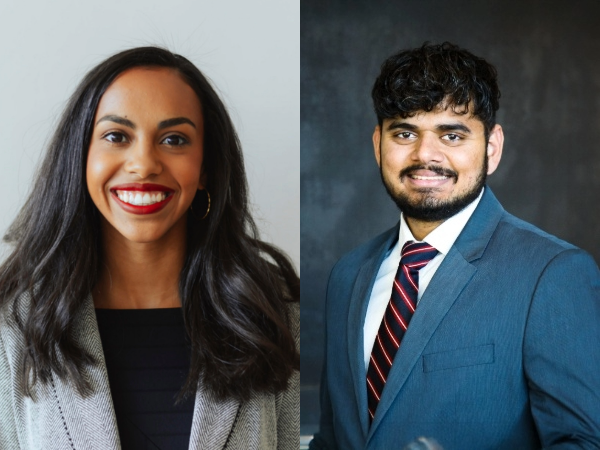 As part of the Office of Service Learning initiative, 24 MS1s recently provided in-person counseling at the Foundry and the Lovelady Center. This in-person activity marked a significant shift from previous years, allowing students to directly interact with individuals at these centers and gain firsthand experience in community health counseling.
As part of the Office of Service Learning initiative, 24 MS1s recently provided in-person counseling at the Foundry and the Lovelady Center. This in-person activity marked a significant shift from previous years, allowing students to directly interact with individuals at these centers and gain firsthand experience in community health counseling.
The Foundry and The Lovelady Center are two nonprofit organizations dedicated to rehabilitation and recovery in the Birmingham area. The Foundry supports adults overcoming addiction through structured rehabilitation programs, career assistance, and spiritual growth. The Lovelady Center provides women with housing, education, and job training to help them transition to independent living. Both centers have ongoing partnerships with UAB Heersink School of Medicine, including the Senate Service Board’s collaboration with the Lovelady Center and the Medical Students Ask & Advise (MSAA) program’s monthly smoking cessation counseling at the Foundry.
Over several days, Heersink medical students visited the centers and counseled 111 participants on topics such as cardiovascular health, exercise, smoking cessation, and skincare. The in-person format enabled students to engage participants in meaningful conversations about their health and lifestyle goals, fostering a deeper understanding of the challenges these individuals face.
Exercise as medicine
At The Foundry, medical student Ariana Oliver focused on exercise counseling, meeting one-on-one with six participants for 30-minute sessions. Each conversation was uniquely tailored to the individual’s lifestyle and fitness level.
“Everyone’s experiences and current situations were unique, so adhering to the counseling structure of ‘ask, advise, assess, assist’ was a major component that led to rewarding conversations,” Oliver explained. “It was exciting to identify exercises they already enjoyed and encourage them to continue doing them.”
Using the FITT principle—Frequency, Intensity, Time, and Type—Oliver helped participants develop structured exercise plans. “Most prescriptions consisted of a certain type of exercise 3-5 days a week at moderate to vigorous intensity for about 30 minutes to an hour a day,” she said.
For Oliver, the experience was about more than just giving advice—it was about learning to listen and build rapport. “It was a privilege to provide exercise counseling that has the potential to prevent and improve conditions, including cardiovascular disease, and in doing so play a small role in improving the well-being of men going through addiction recovery.”
Connecting through counseling
At The Lovelady Center, medical student Neel Patel participated in cardiovascular counseling, smoking cessation support, and a skincare presentation. While he initially expected simply to provide advice, he soon realized that effective counseling required much more.
“I walked into this with the idea of advising individuals on leading a healthier lifestyle. Instead, I learned how to be a good listener,” Patel shared. “With more time spent speaking to individuals at the Lovelady, I realized how difficult it is to bring change without giving advice.” The goal of health coaching is to empower patients to come up with their own plans for change, since they are the experts in their own lives, rather than telling them what to do.
Through these interactions, Patel formed connections with participants, many of whom returned for follow-up visits. “When that first visit turns into a second and subsequently a third, I can meet with individuals I’ve formed a good connection with and watch their progress toward a healthier lifestyle. Each conversation reveals a sense of passion—whether it’s wanting to be closer to family, start school, or finding a stable job.”
For Patel, this experience reinforced the importance of maintaining compassion in medical practice. “In the future, as we care for and serve people every day, it becomes routine to provide treatment. It seems difficult to maintain the same level of compassion because the idea of treating illness takes precedence over the time taken to speak and interact with patients. Activities where I can take my time and learn how different individuals’ life experiences keep me actively thinking of care.”
The importance of community engagement
This hands-on volunteer experience not only strengthened students’ clinical skills but also deepened their understanding of patient-centered care. The initiative reflects Heersink School of Medicine’s commitment to community engagement and service.
“By engaging with the community, our students learn how complex it can be to live a healthy lifestyle, and we hope these experiences help them become more empathetic, and more effective physicians,” said Caroline Harada, M.D., associate dean for Strategic Initiatives. “Additionally, we aim to provide services that are useful to people in our communities. The fact that over 100 community members chose to have counseling sessions with our students suggests to me that individualized health counseling is something people really want.”
In addition to volunteer opportunities, programs like MSAA and the Senate Service Board partnerships will continue to provide medical students avenues to support and learn from their community, gaining valuable insights that will shape their future roles as physicians.
For more information about Service Learning opportunities, visit the Service Learning webpage.